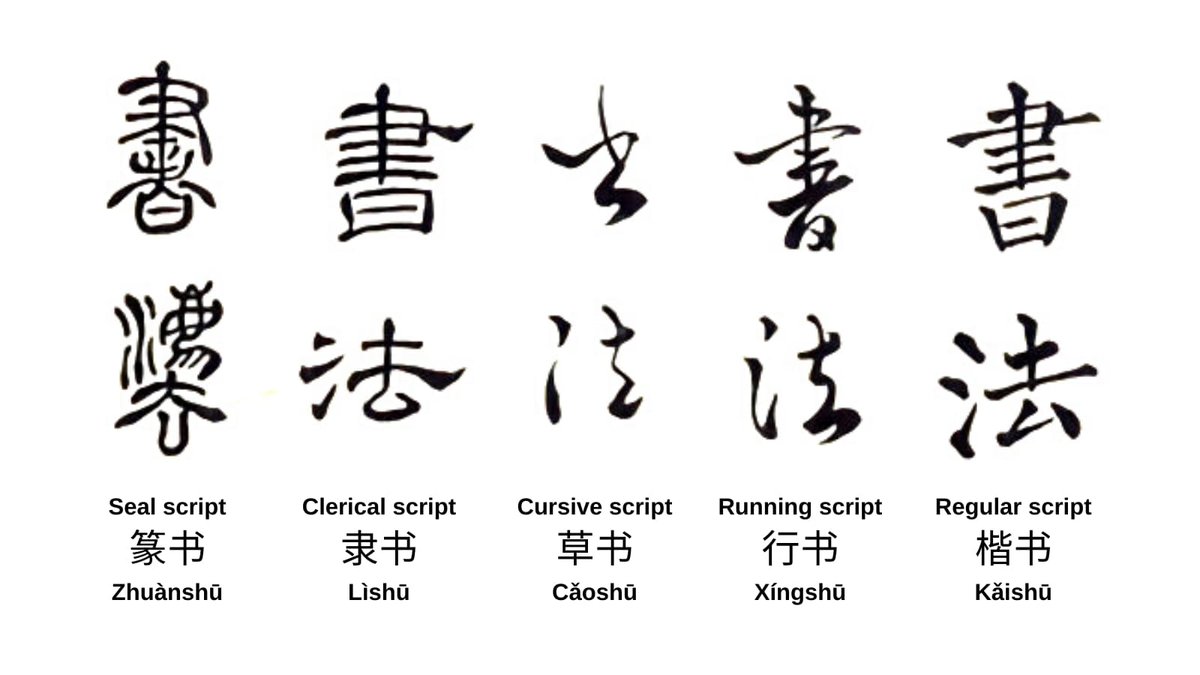Stylistic Properties
Chinese calligraphy comes in many styles. There are five major script types used today in China. In the general order of their appearance, there are: seal script, clerical script, cursive script, running script, and standard script.
Each script type has its own defining visual traits and lends itself to different kinds of textual content and function. Being able to recognize these five script types constitutes the first step in understanding Chinese calligraphy and its nuanced visual vocabulary. As the calligrapher chooses the script type that best suits the occasion of writing and the calligrapher's mood, being able to discern the differences between these types amounts to possessing the key to deciphering the calligrapher’s mind at the moment of creation. An additional reason is that calligraphies had been historically categorized by script type rather than by the content of the text, a fact that highlights the primacy of the visual form in the critical conversations associated with this art.
It is also possible to have more than one script type in the same work of art, usually in the form of colophons (on handscrolls) or inscriptions (on hanging scrolls), as the calligrapher who appended his comments to the original work felt compelled to use a particular type of script.
